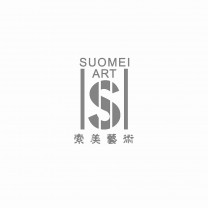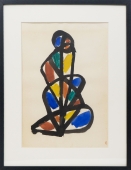- 资质:
- 评分:
1分 2分 3分 4分 5分 6分 7分 8分 9分 10分 10分
- 印象:
- 经营时间:30年
- 展厅面积:400平米
- 地 区:上海-青浦
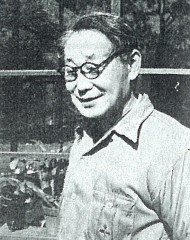
艺术简介
山口长男
1902-1983
山口长男二次大战后从法国回到日本,边在武藏野美术大学教书,一边埋头于抽象创作。山口长男为李禹焕恩师,更为金焕基以及无数战后日本学生提供资金援助及艺术指导,独力奏鸣单色画的交响乐曲,引领七十年代亚洲单色画家的崭新浪潮。他的独树一帜的画作早于五、六十年代圣保罗与威尼斯双年展、古根海姆博物馆及纽约现代艺术博物馆展出。
苏富比呈献拍卖史上首个以山口长男作品为主题的专拍——「山口长男:单色志,藉此向日本抽象艺术史上最具代表性的艺术先锋致敬。山口氏一生大隐隐于市,但对于戦后亚洲前卫艺术影响深远,举足轻重。
1950及1960年代全球艺术以不定形艺术及抽象表现主义为主流,山口长男以极简主义创作——简洁几何形状、厚涂肌理顔料,以及由黑色、赭黄与红褐组成的标志性独特色调,独树一帜。他的作品与众不同,质朴之中充满淡消坚定的力量,注重素材媒介的肌理质感,重视创作过程,仅采用少数几个色彩以探究顔料本身的深度及广度。山口长男的艺术理念超越当时的思维,成为1970年代亚洲单色艺术之滥觞。
山口长男五十年来独力奏鸣单色画的交响乐曲,在全球艺坛引起阵阵回响浪潮。1950年代中期,山口代表日本在圣保罗及威尼斯双年展参展,1960年代中期,他已在古根海姆博物馆及钮约现代艺术博物馆举办过展览。他的优美风格在创作生涯期间逐渐自然演变,从未偏离自己的美学主张永远充满视觉与感官张力。
Yamaguchi
1902-1983
Yamaguchi returned to Japan from France after World War II. While teaching at Musashino Art University, he immersed himself in abstract creation. Yamaguchi was a teacher of Li Yuhuan, Jin Jinji and countless post-war Japanese students, who provided financial assistance and artistic direction. He played the symphony of monochrome paintings alone, leading a new wave of Asian monochrome painters in the 1970s. His unique paintings were exhibited before the Biennale of St. Paul and Venice in the 1950s and 1960s, the Guggenheim Museum and the New York Museum of Modern Art.
Sotheby's presented the first special auction in the history of auction with the theme of Yamaguchi's works-"Yamaguchi Yamaguchi: Monochromatic Records, to pay tribute to the most representative art pioneer in the history of Japanese abstract art. Yamaguchi's life is hidden In the city, but has a far-reaching influence on the avant-garde art of Asia.
In the 1950s and 1960s, global art was dominated by indefinite art and abstract expressionism. Naoguchi Yamaguchi created minimalism-simple geometric shapes, thick coated texture pigments, and the iconic unique composition of black, ocher and reddish brown Hue is unique. His works are different from others. The simplicity is full of light and firm power, focusing on the texture of the material medium and the creative process. Only a few colors are used to explore the depth and breadth of the paint itself. Yamaguchi’s artistic concept surpassed the thinking at that time and became the origin of Asian monochrome art in the 1970s.
Over the past 50 years, Yamaguchi has played a symphony of monochromatic paintings, which has caused waves of repercussions in the art world. In the mid-1950s, Yamaguchi represented Japan at the São Paulo and Venice Biennale. In the mid-1960s, he had held exhibitions at the Guggenheim Museum and the Nieuw Modern Art Museum. His beautiful style gradually evolved naturally during his creative career, never deviating from his own aesthetic propositions and always full of visual and sensory tension.

 庞明璇
庞明璇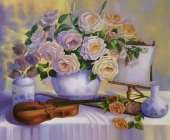 未知
未知 张大千
张大千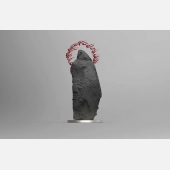 马文甲
马文甲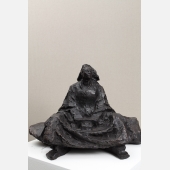 李秀勤
李秀勤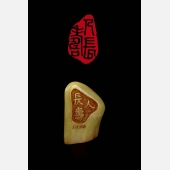 陈维廉
陈维廉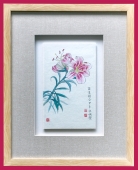 赵映璧
赵映璧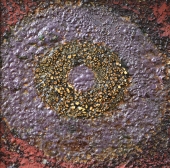 魏新
魏新